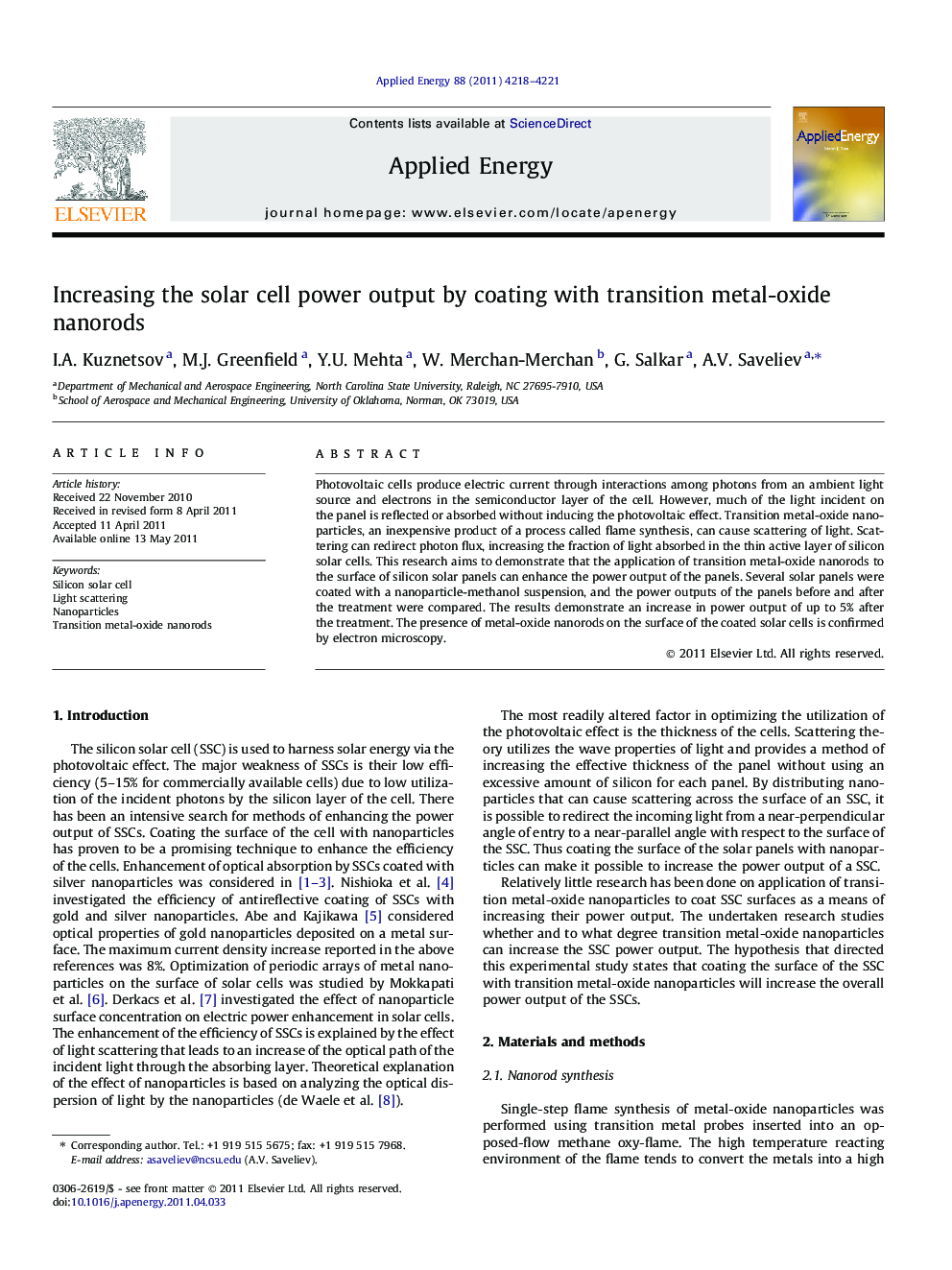| Article ID | Journal | Published Year | Pages | File Type |
|---|---|---|---|---|
| 244232 | Applied Energy | 2011 | 4 Pages |
Photovoltaic cells produce electric current through interactions among photons from an ambient light source and electrons in the semiconductor layer of the cell. However, much of the light incident on the panel is reflected or absorbed without inducing the photovoltaic effect. Transition metal-oxide nanoparticles, an inexpensive product of a process called flame synthesis, can cause scattering of light. Scattering can redirect photon flux, increasing the fraction of light absorbed in the thin active layer of silicon solar cells. This research aims to demonstrate that the application of transition metal-oxide nanorods to the surface of silicon solar panels can enhance the power output of the panels. Several solar panels were coated with a nanoparticle-methanol suspension, and the power outputs of the panels before and after the treatment were compared. The results demonstrate an increase in power output of up to 5% after the treatment. The presence of metal-oxide nanorods on the surface of the coated solar cells is confirmed by electron microscopy.
► Nanoparticles enhance solar cell efficiency. ► Solar cell power increase by nanorod coating. ► Metal-oxide nanorods are prepared in flames. ► Molybdenum oxide nanorods effectively scatter light on solar cell surface. ► Scattering efficiency depends on coating density.
